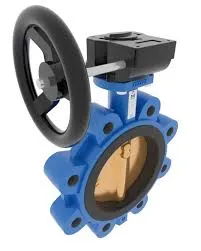9 月 . 24, 2024 18:47 Back to list
three way air valve
Understanding Three-Way Air Valves Functionality and Applications
Three-way air valves are essential components in various pneumatic systems, providing efficient control of airflow and pressure. They facilitate the distribution of compressed air to different pathways, enabling the regulation of machinery, tools, and equipment. This article explores the functionality, types, and applications of three-way air valves, shedding light on their critical role in industrial and commercial settings.
Functionality of Three-Way Air Valves
As the name suggests, three-way air valves have three ports one inlet and two outlets. The primary function of these valves is to either divert air from one line to another or mix air from two sources before sending it out to a destination. The switching mechanism can be manual, solenoid-operated, or actuated by pressure differences, depending on the application requirements.
When the valve is in one position, it allows air to flow from the inlet to one outlet while blocking the other. Switching the valve to the opposite position reverses this flow, enabling seamless control over the pneumatic circuits. This versatility makes three-way valves ideal for applications where alternating flow is necessary, such as in actuating cylinders, controlling air-powered tools, or operating pneumatic machinery.
Types of Three-Way Air Valves
Three-way air valves come in various designs, each tailored to specific applications. The most common types include
1. Direct Acting Valves These valves respond directly to pressure changes and are generally more sensitive to small adjustments. They are ideal for applications requiring precise control.
2. Pilot Operated Valves These use a small pilot pressure to control a larger flow, allowing for greater efficiency and reduced energy consumption. They are often used in systems with high flow rates or where pressure drops are a concern.
3. Manual Valves These valves are operated through a manual lever or knob, allowing operators to switch air flow direction as needed. They are commonly found in workshop environments or prototyping scenarios.
three way air valve

4. Solenoid Valves Utilizing electromagnetic coils, these valves automatically switch flow direction when an electrical signal is applied. They are widely used in automated processes and remote control systems.
Each type of valve has its own set of advantages and is chosen based on specific operational needs, pressure requirements, and control preferences.
Applications of Three-Way Air Valves
Three-way air valves are prevalent in various industries, thanks to their flexibility and reliability. Here are some key applications
- Manufacturing In automated assembly lines, these valves control the operation of pneumatic cylinders that move parts from one station to another, enhancing efficiency and productivity.
- Automotive Industry In automotive workshops, three-way valves manage air tools used for tire inflation, brake servicing, and engine diagnostics, allowing mechanics to switch tasks quickly.
- Food and Beverage Processing In this sector, maintaining the flow of air and ensuring hygiene standards is crucial. Three-way valves help control air distribution in cleaning processes and packaging operations.
- HVAC Systems Three-way valves regulate airflow and temperature in heating, ventilation, and air conditioning systems, ensuring optimal comfort and energy efficiency.
Conclusion
Three-way air valves are integral to the functionality of pneumatic systems across numerous industries. By enabling precise control over air distribution and flow paths, they contribute to improved operational efficiency and versatility. As technology advances, the design and application of three-way air valves continue to evolve, catering to the increasingly complex demands of modern manufacturing and automation. Whether in heavy industry or service-oriented environments, these valves remain indispensable tools for engineers and technicians alike.
Share
-
Understanding the Differences Between Wafer Type Butterfly Valve and Lugged Butterfly ValveNewsOct.25,2024
-
The Efficiency of Wafer Type Butterfly Valve and Lugged Butterfly ValveNewsOct.25,2024
-
The Ultimate Guide to Industrial Swing Check Valve: Performance, Installation, and MaintenanceNewsOct.25,2024
-
Superior Performance with Industrial Swing Check Valve: The Essential Valve for Any SystemNewsOct.25,2024
-
Industrial Swing Check Valve: The Ideal Solution for Flow ControlNewsOct.25,2024
-
You Need to Know About Industrial Swing Check Valve: Functionality, Scope, and PerformanceNewsOct.25,2024